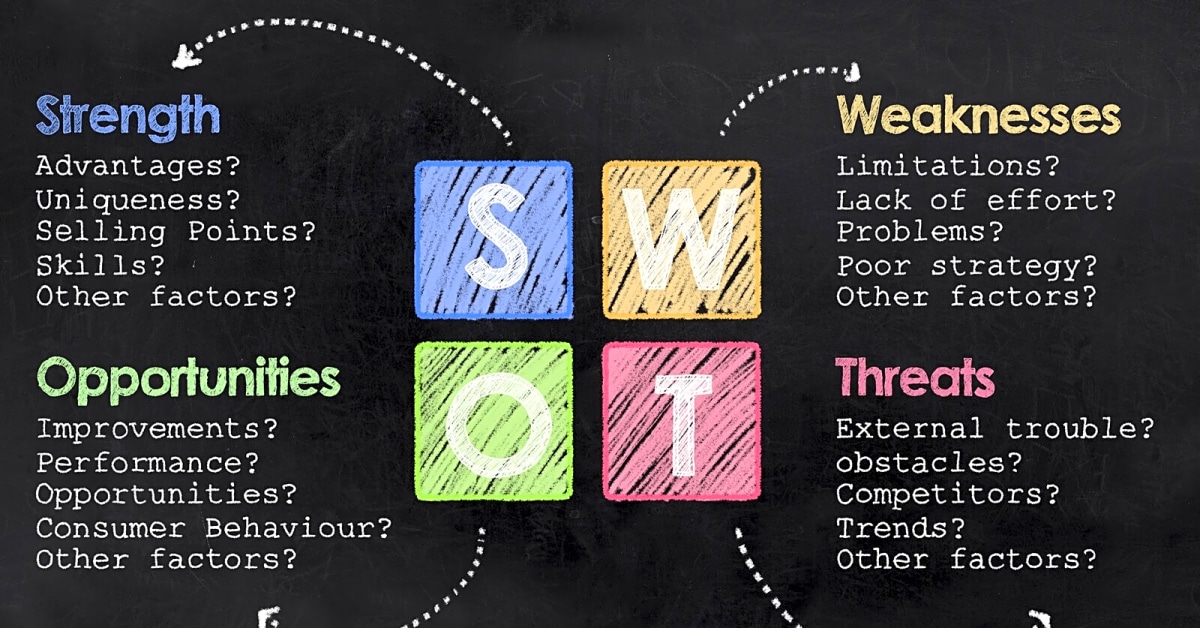In today’s rapidly changing business landscape, staying ahead of the competition is crucial for success. One way to gain a competitive advantage is by utilizing SWOT analysis to inform strategic decisions. SWOT, which stands for strengths, weaknesses, opportunities, and threats, is a powerful tool that allows businesses to identify their internal strengths and weaknesses, as well as external opportunities and threats. By understanding these factors, businesses can make more informed and effective strategic decisions that can help them achieve their goals. In this article, we will dive into the world of strategic planning and explore how using SWOT analysis can give businesses a leg up in the market. We will cover the basics of SWOT analysis, its benefits, and how it can be applied to inform strategic decisions. So sit back, grab a pen and paper, and get ready to learn how SWOT analysis can help your business thrive in today’s competitive environment.
To begin with, it is important to understand the purpose of SWOT analysis. This tool helps businesses identify their internal strengths and weaknesses, as well as external opportunities and threats. By conducting a SWOT analysis, businesses can gain a better understanding of their current position in the market and make informed decisions for future growth.
SWOT stands for strengths, weaknesses, opportunities, and threats, and each component plays a crucial role in the analysis process.
Strengths: These are the internal factors that give a business an advantage over its competitors. They can include things like a strong brand reputation, skilled employees, or unique products/services.
Weaknesses: These are the internal factors that put a business at a disadvantage. They can include things like a lack of resources, outdated technology, or poor customer service.
Opportunities: These are external factors that could potentially benefit a business. They can include things like emerging markets, new technology, or changes in consumer behavior.
Threats: These are external factors that could potentially harm a business. They can include things like new competitors, economic downturns, or changing regulations.
By carefully examining each component of SWOT analysis, businesses can gain valuable insights into their current situation and use that information to inform their strategic decisions.
For example, if a business identifies a strength in their skilled employees, they may choose to invest in additional training to further enhance their capabilities. On the other hand, if a weakness is identified in their outdated technology, they may decide to allocate resources towards upgrading their systems to stay competitive.
In addition to identifying areas for improvement, SWOT analysis can also help businesses capitalize on opportunities and mitigate potential threats. By staying informed about market trends and changes, businesses can position themselves to take advantage of emerging opportunities and proactively address potential challenges.
Overall, using SWOT analysis as part of your strategic planning process can provide valuable insights and help your business gain a competitive advantage. By regularly conducting SWOT analyses, you can stay ahead of the competition and make informed decisions that lead to long-term growth and success.
Assessing Your Weaknesses
Next, you need to assess your weaknesses. These are areas where your business may be lacking or could be improved upon. It could be anything from outdated technology to poor customer service.
Identifying Your Strengths
The first step in using SWOT analysis is identifying your strengths. These are the internal factors that give your business an advantage over competitors. This could include things like a strong brand reputation, skilled employees, or unique products or services.
Exploring Opportunities
After identifying your strengths and weaknesses, it’s time to look at external opportunities. These are factors in the market or industry that could potentially benefit your business. For example, a new technology that could streamline your processes or a growing market for your products.
Recognizing Threats
Finally, you need to recognize potential threats to your business. These are external factors that could negatively impact your business, such as new competitors, changing consumer trends, or economic downturns.
By conducting a thorough SWOT analysis, businesses can gain valuable insights into their current position and make informed decisions for future growth. It allows them to capitalize on their strengths, address weaknesses, and take advantage of opportunities while mitigating potential threats.
